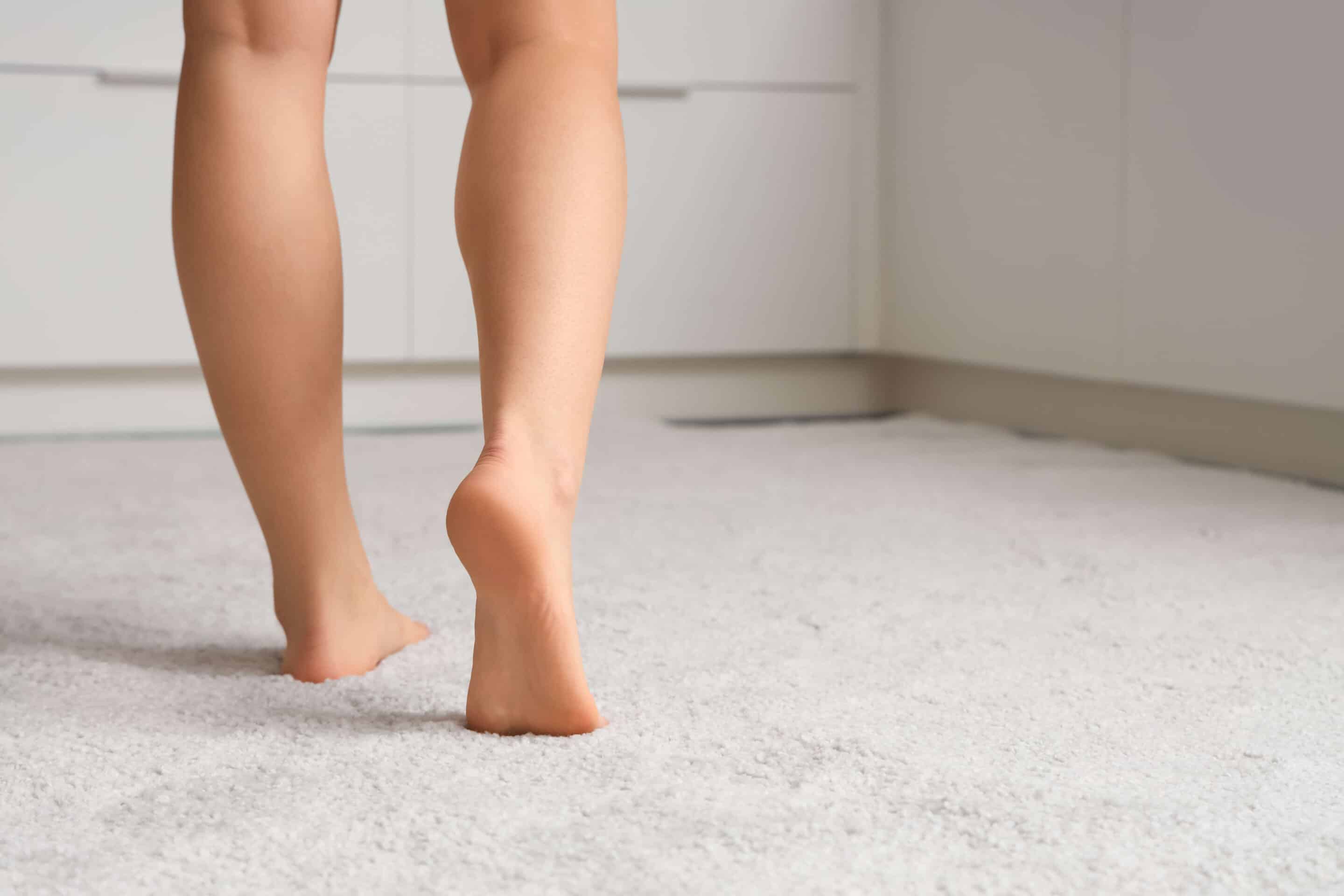Heel Pain
Heel pain is one of the most common foot complaints, affecting daily activities like walking, standing, or exercising. Despite its prevalence, it’s often misunderstood or ignored, which can lead to worsening discomfort and potential complications.
At Richardson Podiatry Center, Dr. David Haddad offers expert diagnosis and treatment options tailored to your unique needs. With the right care, you can overcome heel pain and restore your mobility.
Understanding Heel Anatomy and Its Role in Heel Pain
To understand heel pain, it’s essential to know the structure of the heel and its surrounding tissues.
Key Components of Heel Anatomy
- Calcaneus (Heel Bone): The foundation of the heel, this large bone absorbs body weight and provides structural support.
- Talus (Ankle Bone): This small bone sits above the calcaneus, connecting the foot to the leg and helping distribute weight.
- Connective Tissues:
- Plantar Fascia: A thick band of tissue running from the heel to the toes, responsible for arch support.
- Achilles Tendon: The strongest tendon in the body, connecting the calf muscles to the heel and enabling movement like walking or running.
Understanding these components helps pinpoint where pain originates and determines the best treatment.
Common Causes of Heel Pain
Heel pain can stem from various conditions, ranging from overuse to anatomical issues.
Plantar Fasciitis
- What It Is: Inflammation of the plantar fascia caused by excessive stress or overstretching.
- Causes: Extended periods of standing, wearing unsupportive footwear, abrupt increases in physical activity, or engaging in high-impact sports.
- Symptoms:
- Sharp, stabbing pain near the heel, especially upon waking.
- Discomfort that improves after initial movement but may worsen with prolonged activity.
Achilles Tendinitis
- What It Is: Inflammation of the Achilles tendon from repetitive strain or overuse.
- Causes: Tight calf muscles, improper footwear, or sudden increases in activity intensity.
- Symptoms:
- Discomfort and tightness felt along the back of the heel.
- Worsening pain with activity, especially uphill or sprinting.
Sever’s Disease
- What It Is: A growth-related condition common in children and adolescents, where the Achilles tendon pulls on the heel’s growth plate.
- Causes: Growth spurts, high-impact activities, or inadequate footwear.
- Symptoms:
- Discomfort at the back or underside of the heel.
- Worsening discomfort after physical activities like running or jumping.
Retrocalcaneal Bursitis
- What It Is: Inflammation of the bursa, a small fluid-filled sac that provides cushioning for the heel.
- Causes: Repetitive stress or irritation from tight or ill-fitting shoes.
- Symptoms:
- Redness and swelling in the back of the heel.
- Pain that worsens with activity or pressure from shoes.
Heel Spurs
- What It Is: Bone growths at the bottom of the heel caused by prolonged stress or plantar fasciitis.
- Symptoms:
- Sharp or aching pain when standing or walking.
- Frequently linked to plantar fasciitis, though not always the primary source of pain.
Heel Pain Treatment Options
Conservative Approaches
- Rest and Ice: Reduce activity and apply ice to alleviate inflammation.
- Stretching Exercises: Target the plantar fascia and Achilles tendon to improve flexibility and relieve tension.
- Over-the-Counter Medications: Nonsteroidal anti-inflammatory drugs (NSAIDs) can help reduce pain and swelling.
Custom Orthotics
- What They Are: Shoe inserts designed to support the foot and correct biomechanics.
- Benefits: Redistributes pressure, alleviates stress on the heel, and improves overall comfort.
Steroid Injections
- Use: For severe cases of inflammation unresponsive to conservative treatments.
- Effectiveness: Offers temporary relief but should be used sparingly to avoid potential complications.
Physical Therapy
- Role: Strengthens foot muscles, improves flexibility, and promotes healing.
- Recommended Exercises:
- Calf stretches.
- Rolling a tennis ball under the foot.
- Toe stretches for plantar fascia relief.
Surgical Options
- When Considered: Only for chronic, unresponsive cases after exhausting other treatments.
- Procedures: This may include releasing the plantar fascia or removing bone spurs.
Preventing Heel Pain
Ease Into Physical Activity
- Slowly ramp up activity intensity to give your body time to adjust.
- Avoid sudden changes in workout routines.
Wear Proper Footwear
- Look for shoes with adequate arch support, cushioning, and a good fit.
- Replace worn-out shoes regularly to maintain support.
Warm Up and Stretch
- Always warm up before exercise to help prevent injuries.
- Incorporate dynamic stretches targeting the calves, heels, and feet.
Cross-Train
- Mix high-impact activities like running with low-impact exercises like swimming or cycling to reduce strain.
Comprehensive Foot Care in Richardson
At Richardson Podiatry Center, Dr. David Haddad and his team offer personalized care for all types of heel pain. From advanced diagnostics to customized treatment plans, we prioritize your comfort and long-term foot health.
Start your journey to relief by booking an appointment today.
Heel pain doesn’t have to control your life. By understanding its causes, exploring treatment options, and adopting preventative measures, you can reclaim your mobility and comfort. Contact Richardson Podiatry Center to start your journey toward lasting relief.



